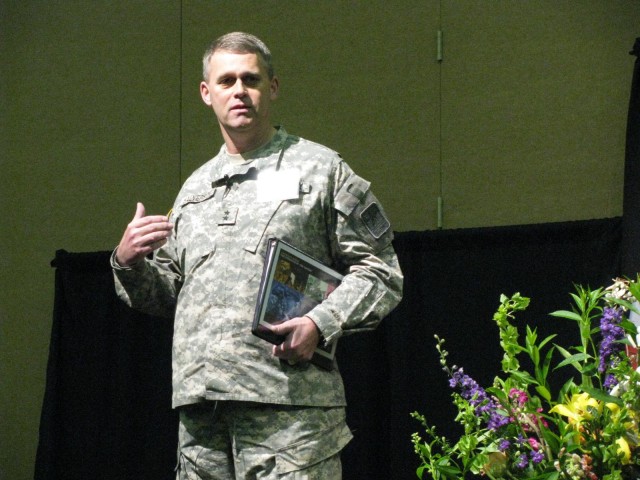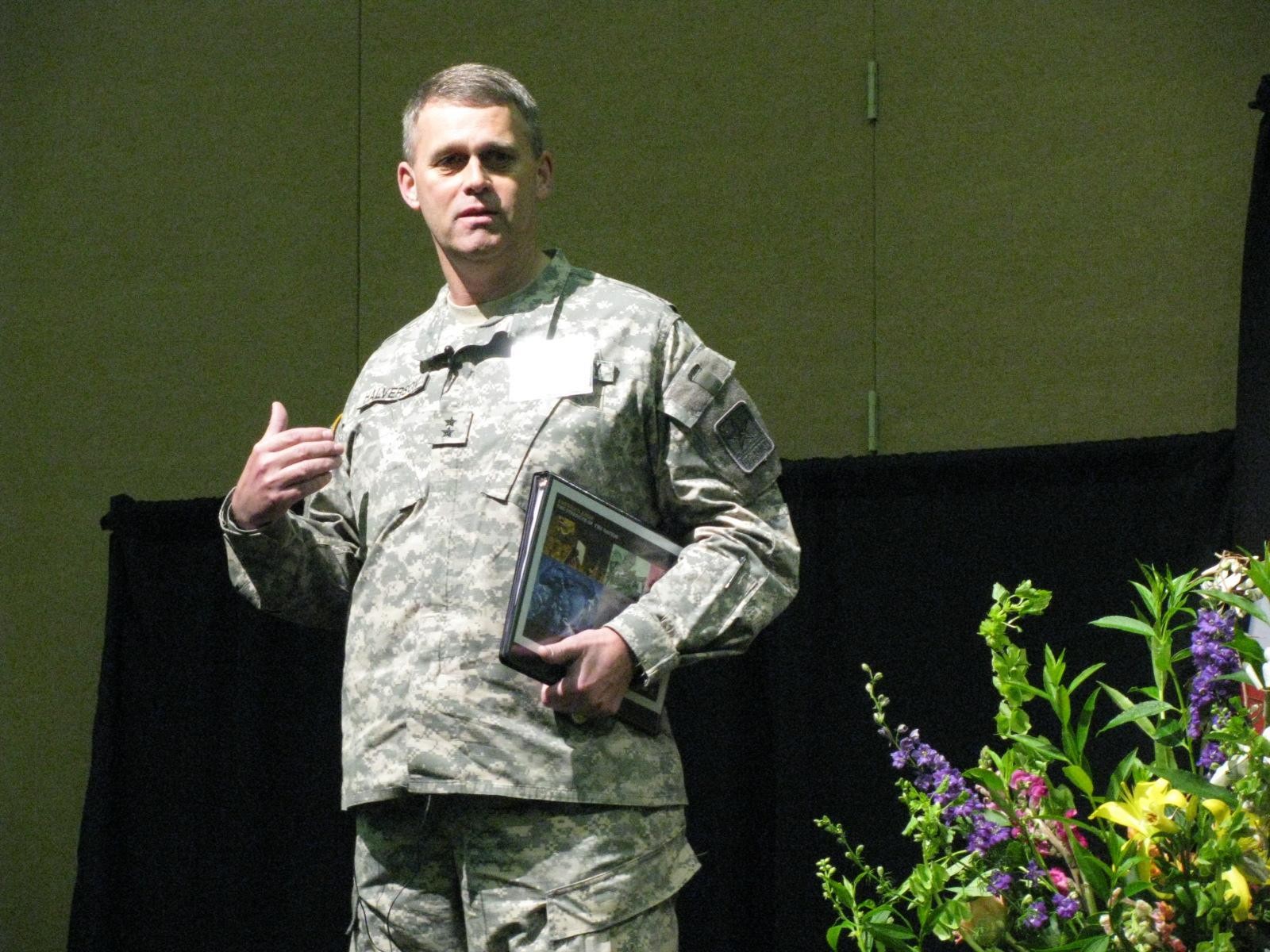
At the Pentagon, the overriding question is "How much can we afford in support of the war fighter'"
Every day, Soldiers like Maj. Gen. David Halverson, director of Force Development for the Office of the Deputy Chief of Staff, work to ensure Soldiers get what they need to be successful on the battlefield during a time of tightening budgets and congressional scrutiny.
"It has to be balanced," said Halverson, speaking to participants at the AUSA Tactical Missiles Conference at the Von Braun Center May 19.
"How can we structure science and technology so we can get it out to the war fighter faster' It's reality. We're working very hard to ensure we can get support to the war fighter. We are working to balance near-term readiness and posturing for the future."
The uptempo on the battlefield is also felt at the Pentagon, where action items that used to take eight to 10 weeks now get done in two weeks.
"We're burning a lot of energy to take care of things that need to be done today," Halverson said. "At the same time, we are making big decisions on things like force mix. What is the force going to look like' What kind of Army are we going to be' There's a lot of discussions to ensure we have the Army we need to be in persistent conflict."
Senior Army leaders are looking at the entire life cycle management in assessing the future Army force. Sustainment and how to integrate missile systems in with units are key concerns.
At the same time leaders struggle with the current and future needs of the Army, they are also dealing with shrinking Army buying power due largely to personnel costs, Halverson said.
"We have transformed our Army in the eight years we've been in conflict," he said. "We do have an operational reserve."
Even so, it costs $1.6 million to set up a brigade. And, while the Army does understand the demands of war, its Soldiers are showing the effects of multiple deployments.
"We always want to play the 'away game,'" Halverson said, referring to fighting wars on foreign soil. Yet, the costs of an "away game" are high.
To achieve a balance between investing in today and in the future, Halverson said the Army must set conditions, invest in Soldier and family support programs, continue Base Realignment and Closure activities, supplement funding to Army bases and incorporate the Brigade Combat Team Modernization Strategy.
"The Army is not sitting back and saying 'Woe is me' on these things," he said. "We are moving out ... Modernization will be there."
The Army is also asking hard questions concerning costs, needs of the Soldiers, increasing capabilities and maintaining strategic partnerships.
"We are trying to be smart in our requirements so that we don't get growth in costs that can put our programs at risk," Halverson said. "There are a lot of studies going on at a very quick pace. It is not business as usual."
Many studies are focused on theater operations and future capabilities for the war fighter.
"We're doing a lot of shaping to ensure the Soldier gets the best bang for the buck," he said. "We can get bigger and better. But what capability do we truly want' The environment has changed and we're pretty busy trying to posture ourselves. Hopefully, we have a good foundation base so we can influence the future."
Missile costs are primary cost drivers for the Army's missile defense programs. Yet, while the Army struggles to meet war fighter requirements, it still has technology for urban warfare that no other nation has developed, he said.
"We've gone a long way because we've given our ground Soldiers the capability they need in the urban tactical fight. We've pushed a lot of stuff forward and the Soldiers need it," Halverson said.
He said Soldiers have done a phenomenal job and have made it easier for the Army leadership to look ahead.
"The Army will modernize. We feel very comfortable we will define that modernization and move forward," Halverson said.
In that modern Army, cost benefit analysis will be increasingly important, tactical missiles must be even more highly effective and accurate, lower costs in precision munitions will be imperative, and there will be an institutionalized sense of urgency and higher levels of responsiveness, he said.
"It's not business as usual. Let's ask the tough questions," he said. "We know we will go through some transition. But we have the ability to articulate where we are and where we're going with confidence. It's all about realistic requirements and execution of those requirements."

Social Sharing